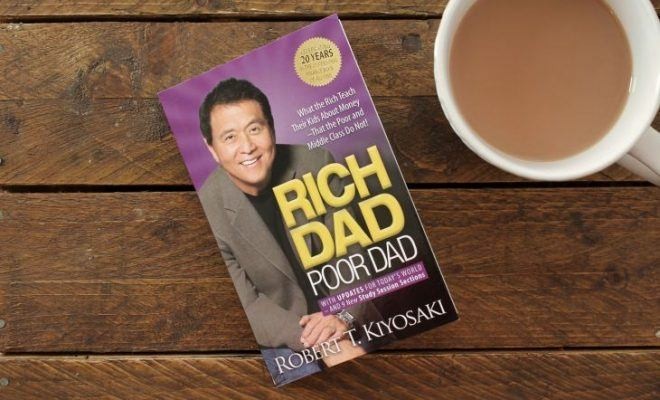Rich Dad Poor Dad: A Book Review
“Rich Dad Poor Dad” by Robert Kiyosaki is a financial self-help book that has become a classic in the genre. It is a story about Kiyosaki’s two fathers: his biological father, the “poor dad,” and the father of his best friend, the “rich dad.” The book contrasts their attitudes toward money, work, and life, offering insights into how each man’s approach affected Kiyosaki’s financial beliefs and success.
The “poor dad,” Kiyosaki’s biological father, is a highly educated man who believes in the traditional path of getting a good education, securing a stable job, and working hard to climb the corporate ladder. Despite his intelligence and hard work, he struggles financially and lives paycheck to paycheck.
In contrast, the “rich dad,” his friend’s father, is a successful entrepreneur who didn’t finish college but understood the value of financial education and investing. He teaches Kiyosaki valuable lessons about money, such as the importance of acquiring assets that generate income, understanding the difference between assets and liabilities, and the power of entrepreneurship.
One of the key takeaways from the book is the concept of financial literacy. Kiyosaki emphasizes the need to understand financial statements, the principles of investing, and how money works. He argues that the traditional education system fails to teach these critical skills, leaving many people ill-prepared to manage their finances effectively.
The book also challenges conventional wisdom about money and success. It encourages readers to think outside the box, take calculated risks, and invest in themselves. Kiyosaki advocates for the idea of making money work for you, rather than working for money. He stresses the importance of building a portfolio of income-generating assets, such as real estate and stocks, to achieve financial freedom.
Another important theme in the book is the mindset of the rich versus the poor. Kiyosaki argues that fear and cynicism often hold people back from achieving financial success. He encourages readers to adopt a positive attitude towards money, to be open to new opportunities, and to take control of their financial destiny.
“Rich Dad Poor Dad” has been praised for its straightforward and accessible approach to financial education. It has inspired countless readers to rethink their approach to money and take steps toward financial independence. However, it has also faced criticism for oversimplifying complex financial concepts and promoting risky investment strategies.
Strengths:
- Financial Literacy Foundation: The book makes financial concepts accessible for beginners. Kiyosaki breaks down the difference between assets and liabilities, urging readers to focus on acquiring the former (things that put money in your pocket) and shedding the latter (things that take money away).
- Mindset Shift: “Rich Dad Poor Dad” critiques the idea of trading time for money through a traditional job. It encourages readers to develop an entrepreneurial mindset, seeking opportunities to build wealth through businesses and investments.
- Inspiration and Motivation: Kiyosaki’s personal anecdotes and conversational style make the book engaging. It can be a wake-up call for those stuck in a rut, inspiring them to take charge of their financial future.
Weaknesses:
- Oversimplification: The book can be overly simplistic in its portrayal of wealth-building strategies. Real estate investing and starting businesses require significant knowledge and effort, which the book doesn’t fully explore.
- Lack of Nuance: Kiyosaki’s views on traditional education can be seen as dismissive. Formal education can provide valuable skills and knowledge that contribute to financial success.
- Potential for Risk: Some of the suggested investment strategies might be too risky for beginners, and the book doesn’t delve into risk management.
In conclusion, “Rich Dad Poor Dad” is a thought-provoking book that offers valuable insights into personal finance and wealth-building. While it may not provide a comprehensive guide to financial success, it serves as an excellent starting point for those looking to improve their financial literacy and mindset. Whether you agree with all of Kiyosaki’s ideas or not, the book encourages readers to question conventional wisdom and take a more proactive approach to managing their money.














Post Comment